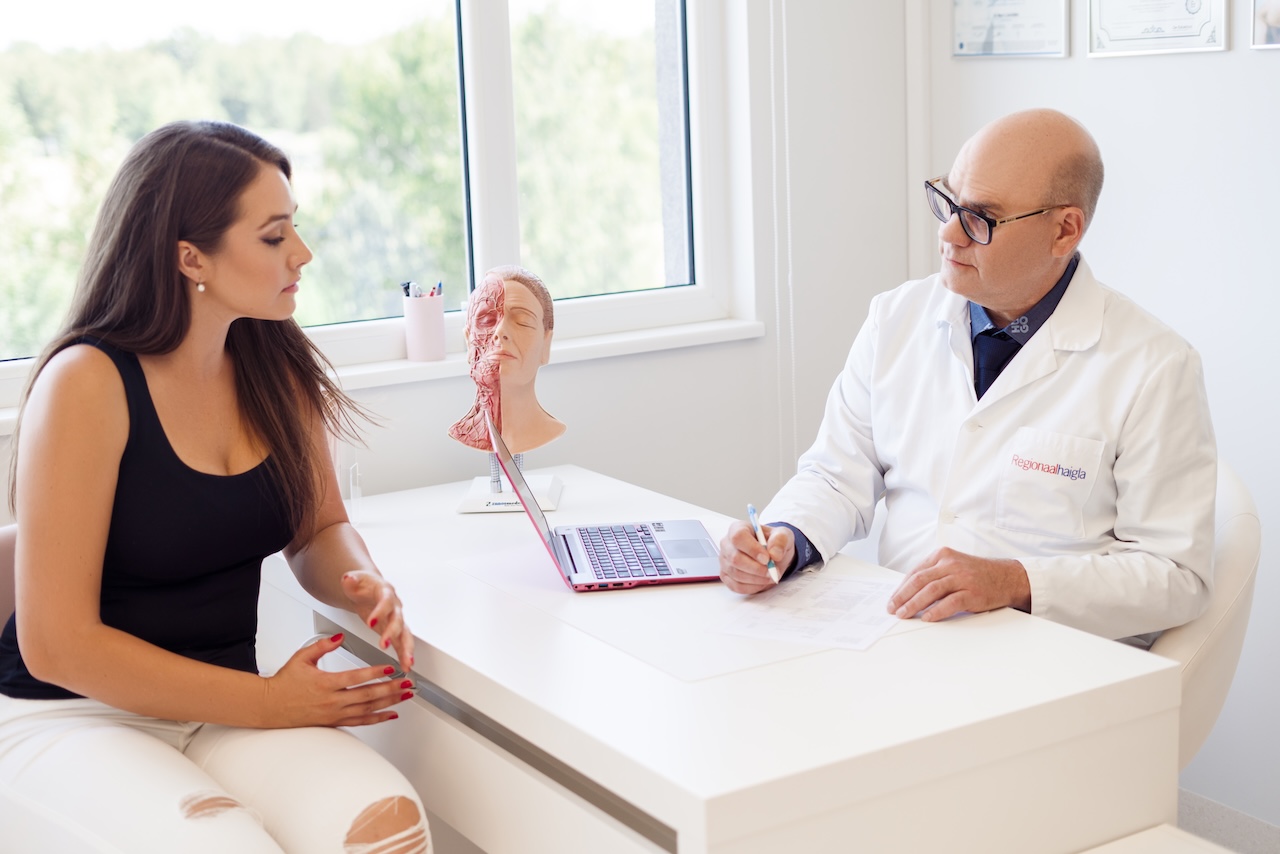Sclerotherapy is a minimally invasive method used to treat smaller varicose veins. During the procedure, a special solution called a sclerosant is injected into the vein. This causes the vein walls to stick together, closing off the vein, which gradually becomes less visible and eventually disappears. In addition, compression therapy with support stockings is required for 3 weeks.
Sclerotherapy is especially effective in the early stages of varicose veins when the veins are still small in diameter.
The need for the procedure and a personalized treatment plan will be determined by Dr. Lasarus Mitrofanoff after an initial consultation and ultrasound examination.
What kind of results can be expected?
After the procedure, the treated vein begins to close and becomes less noticeable. Results typically appear within a few weeks, though in some cases it may take a couple of months—depending on the size of the vein and the individual’s body response.
The effectiveness is evaluated at a follow-up appointment after each session, and if necessary, repeat treatments may be done after 4–6 weeks.
It is not possible to predict in advance how many sessions will be required to remove the varicose veins completely.
When is sclerotherapy recommended?
Indications:
- Early-stage varicose veins
- Isolated small veins
- Cosmetically disturbing visible veins
How does the procedure work?
- The procedure is performed on an outpatient basis and takes only 5–10 minutes.
- Ultra-fine needles are used, making the treatment virtually painless.
- Shaving the area may be recommended prior to the procedure.
- Sensitive individuals may feel mild stinging or a burning sensation during the injection.
- Multiple injections may be administered in one session, and treatment may be performed in stages.
- Wear loose, comfortable clothing and shoes to the procedure.
Aftercare:
- Light physical activity is recommended—such as walking for 30–40 minutes at a gentle pace.
- Wear compression stockings (sometimes even around the clock for a few days). Patients must bring properly fitted compression stockings to the procedure.
- Daily activities can be resumed after the procedure, but avoid saunas and hot baths for 2–3 weeks.
- Avoid sun exposure on the treated area for 1 month.
- More intense physical exercise can be resumed one week after the procedure.
- Avoid shaving and depilation in the treated area for one week.
- Refrain from smoking and alcohol.
Contraindications:
- Allergy to the sclerosant
- Migraine
- Thrombosis or suspected thrombosis
- Acute inflammation in the treatment area
- Pregnancy and breastfeeding
- Use of hormonal medications
- Obesity and low physical activity

